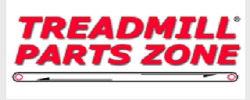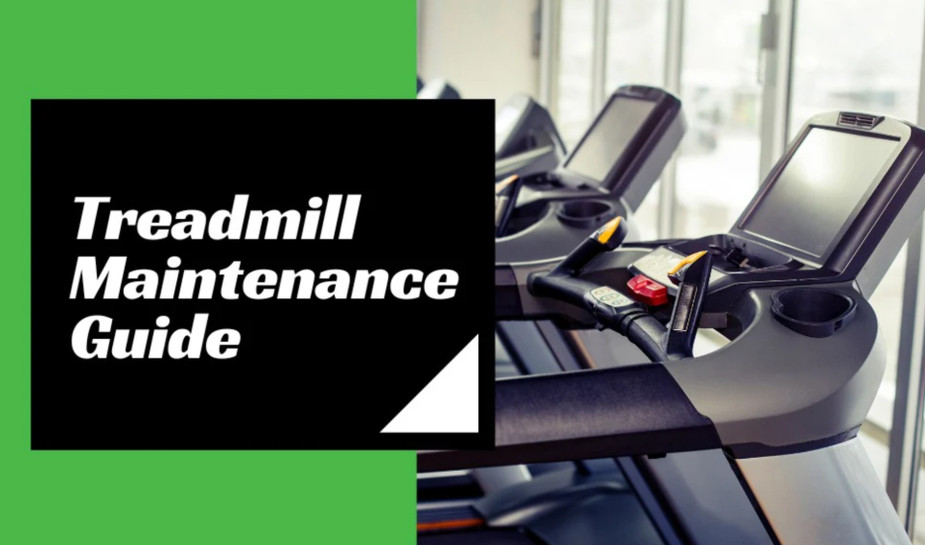Understanding the Importance of Bike Maintenance and Repair
In the realm of cycling, the importance of bike maintenance and repair cannot be overstated. Regular upkeep not only enhances riding performance but also extends the lifespan of the bicycle. Neglecting these essential practices can lead to costly repairs and potential safety hazards. Whether one is an avid cyclist or a casual rider, understanding the critical role that maintenance plays is fundamental.
Maintenance of a bicycle involves routine checks and adjustments to ensure every component functions optimally. This process includes examining the brakes, gears, tires, and chain, among other parts. By doing so, cyclists can prevent minor issues from escalating into major problems, ensuring both safety and comfort during rides.
Moreover, consistent maintenance fosters a deeper connection between the rider and the bike. Familiarizing oneself with the mechanical aspects can be empowering, allowing cyclists to perform quick fixes and adjustments on the go. This proactive approach not only saves time and money but also enhances overall riding experience and confidence.
Key Benefits of Regular Bike Maintenance
Regular bike maintenance offers a myriad of benefits, chief among them being enhanced safety. A well-maintained bike ensures that all components are in optimal working condition, reducing the risk of accidents caused by mechanical failures. For instance, properly adjusted brakes can be the difference between a safe stop and a potential collision.
Another significant advantage is cost efficiency. Routine maintenance can prevent small issues from becoming large, expensive repairs. For example, regularly lubricating the chain can prevent it from wearing out prematurely, saving money on replacements. Additionally, it ensures the bike performs efficiently, requiring less effort to ride and thus enhancing the overall cycling experience.
Lastly, regular maintenance contributes to the longevity of the bicycle. By taking care of the bike's components and ensuring they are free from dirt, rust, and wear, cyclists can extend the life of their bicycles significantly. This not only preserves the bike's value but also ensures it continues to provide reliable service for years to come.
Common Bike Maintenance Tasks
When it comes to bike maintenance, several tasks are fundamental and should be performed regularly. These tasks ensure that the bike remains in top condition, providing a safe and enjoyable ride every time.
-
Checking Tire Pressure: Properly inflated tires are crucial for a smooth and efficient ride. Regularly checking and adjusting the tire pressure can prevent flats and improve handling.
-
Lubricating the Chain: The chain is one of the most critical components of a bike. Keeping it well-lubricated reduces friction, prevents rust, and extends its lifespan.
-
Adjusting Brakes and Gears: Ensuring that brakes and gears are properly adjusted is vital for safety and performance. Regular checks can prevent unexpected failures during rides.
Other essential tasks include inspecting the bike frame for cracks or damage, checking the alignment of wheels, and tightening any loose bolts or screws. These routine checks are simple yet effective in maintaining the bike's integrity and functionality.
Tools and Equipment Needed for Bike Maintenance
For anyone interested in maintaining their bike, having the right tools and equipment is essential. These tools not only make the maintenance process more efficient but also ensure that tasks are performed correctly and safely.
Basic Tools:
- Allen Wrenches: Used for adjusting almost all components, including brakes and handlebars.
- Screwdrivers: Essential for various adjustments and repairs.
- Tire Levers: Necessary for removing tires when fixing flats.
- Chain Tool: Used for repairing or replacing the bike chain.
Additional Equipment:
- Bike Pump: To maintain proper tire pressure.
- Lubricants: Keep chains and moving parts operating smoothly.
- Cleaning Supplies: Brushes and rags to clean dirt and grime from the bike.
Having a dedicated toolkit ensures that cyclists are prepared for any maintenance task, whether at home or on the road. Investing in quality tools pays off in the long run, as they increase the efficiency and ease of bike maintenance.
Step-by-Step Guide to Basic Bike Maintenance
Performing basic bike maintenance can seem daunting, but following a step-by-step guide makes the process straightforward and manageable.
Step 1: Clean the Bike
Start by thoroughly cleaning the bike. Use a gentle soap and water solution to remove dirt and grime from the frame, wheels, and other components. This not only improves the bike's appearance but also allows for easier inspection of any potential issues.
Step 2: Inspect and Inflate Tires
Check the tires for wear, damage, and correct pressure. Inflate them to the recommended psi listed on the tire's sidewall. Properly inflated tires ensure a smoother ride and reduce the risk of punctures.
Step 3: Lubricate the Chain
Apply a suitable lubricant to the chain while slowly pedaling the bike backwards. Wipe off any excess with a clean cloth. Lubricating the chain reduces friction and prevents rust, ensuring smooth gear transitions.
Step 4: Check Brakes and Gears
Inspect the brake pads for wear and adjust the tension if necessary. Ensure that the gears shift smoothly and make any necessary adjustments to the derailleur. Properly functioning brakes and gears are crucial for safety and performance.
By following these steps regularly, cyclists can maintain their bikes in excellent condition, ensuring a safe and enjoyable ride every time.
Identifying and Fixing Common Bike Repairs
Despite regular maintenance, bikes may still require repairs from time to time. Identifying common issues early can prevent them from becoming major problems.
Common Issues:
- Flat Tires: Often caused by punctures from sharp objects. Fixing a flat involves removing the tire, patching the tube, or replacing it if necessary.
- Slipping Chain: A chain that frequently slips may need adjustment or replacement. Ensuring the chain is the correct length and tension can resolve this issue.
- Brake Issues: Squeaking or ineffective brakes may require pad replacement or cable adjustment.
Fixing Techniques:
- Tire Repair: Use tire levers to remove the tire, locate the puncture, and patch it. Reinstall the tire and inflate it to the correct pressure.
- Chain Adjustment: Use a chain tool to adjust the length or replace the chain. Regular lubrication can prevent future issues.
- Brake Adjustment: Tighten or replace brake cables and pads to ensure effective stopping power.
Understanding these common repairs and how to fix them empowers cyclists to handle minor issues independently, minimizing downtime and enhancing riding confidence.
When to Seek Professional Bike Repair Services
While many maintenance tasks and repairs can be handled independently, there are times when professional services are necessary. Recognizing these situations ensures that the bike receives the care it needs without risking further damage.
Indicators for Professional Help:
- Complex Mechanical Issues: Problems involving the bike's internal components, such as the bottom bracket or headset bearings, may require specialized tools and expertise.
- Persistent Problems: Issues like recurring tire punctures or gear slippage that don't resolve with basic repairs should be assessed by a professional.
- Major Overhauls: Routine maintenance might not suffice for older bikes requiring significant updates or part replacements.
Benefits of Professional Services:
- Expertise: Professionals have the knowledge and experience to diagnose and fix complex issues efficiently.
- Specialized Tools: Access to tools not typically found in a home toolkit ensures precise adjustments and repairs.
- Time-Saving: Professional services can complete repairs quickly, minimizing downtime for the cyclist.
Knowing when to seek professional help ensures that the bike remains in optimal condition while preventing potential safety hazards.
Seasonal Maintenance Tips for Bicycles
Bicycles require different maintenance approaches depending on the season. Adapting maintenance routines to seasonal changes ensures optimal performance and longevity.
Spring and Summer:
- Check for Damage: Inspect the bike for any damage incurred during winter storage.
- Lubricate Thoroughly: Increased riding in warmer months requires more frequent lubrication of the chain and moving parts.
- Monitor Tire Pressure: Warmer temperatures can affect tire pressure, so regular checks are necessary.
Autumn and Winter:
- Protect from Elements: Use fenders and weatherproof covers to protect the bike from rain and snow.
- Regular Cleaning: Salt and grime from winter roads can cause corrosion, so frequent cleaning is essential.
- Store Properly: If not riding, store the bike in a dry, sheltered place to prevent rust and damage.
Following these seasonal tips ensures that the bike remains in top condition, regardless of weather conditions, providing a dependable ride throughout the year.
DIY vs. Professional Bike Repair: Pros and Cons
Deciding between DIY and professional bike repair involves weighing the pros and cons of each approach. Both have their unique advantages and potential drawbacks.
DIY Repair:
Pros:
- Cost-Effective: Saves money on labor costs.
- Convenience: Repairs can be done at home, saving time.
- Learning Opportunity: Enhances knowledge and skills in bike maintenance.
Cons:
- Skill Level: Some repairs require advanced skills and knowledge.
- Tool Availability: Specialized tools may be necessary for certain repairs.
- Time-Consuming: Complex repairs can take significant time and effort.
Professional Repair:
Pros:
- Expertise: Access to skilled technicians ensures high-quality repairs.
- Efficiency: Faster turnaround time for complex issues.
- Peace of Mind: Assurance that the bike is serviced correctly.
Cons:
- Cost: Can be more expensive due to labor charges.
- Dependency: Relies on availability of professional services.
- Loss of Learning: Misses out on the opportunity to learn new skills.
Understanding these factors helps cyclists make informed decisions about their bike maintenance and repair strategies, optimizing both performance and cost-effectiveness.
Educational Resources for Bike Maintenance and Repair
For those eager to learn more about bike maintenance, numerous educational resources are available. These resources provide valuable information, tips, and tutorials for both beginners and experienced cyclists.
Online Platforms:
- YouTube Channels: Many cycling enthusiasts share detailed how-to videos covering various maintenance tasks and repairs.
- Blogs and Forums: Online communities offer advice, troubleshooting tips, and shared experiences from fellow cyclists.
Books and Manuals:
- Bike Maintenance Books: Comprehensive guides cover everything from basic maintenance to advanced repairs.
- Manufacturer Manuals: Provide specific information for maintaining particular bike models.
Workshops and Classes:
- Local Bike Shops: Often host workshops and classes for hands-on learning experiences.
- Community Centers: Offer courses and seminars on bike maintenance and repair.
By leveraging these resources, cyclists can deepen their understanding and skills, ensuring their bikes remain in excellent condition.
Conclusion: Keeping Your Bike in Top Condition for Longevity and Performance
In conclusion, the importance of bike maintenance and repair is paramount for ensuring both longevity and optimal performance. Regular maintenance tasks, coupled with the right tools and knowledge, empower cyclists to keep their bikes in excellent condition, enhancing both safety and enjoyment.
Recognizing when to seek professional assistance and adapting maintenance routines to seasonal changes further ensures the bike's reliability. Whether choosing DIY or professional services, the ultimate goal remains the same: preserving the bike's integrity and prolonging its life.
For those passionate about cycling, investing time in learning and performing routine maintenance reaps significant rewards. Not only does it enhance the riding experience, but it also fosters a deeper appreciation and connection with the bicycle. So, take the first step today and ensure your bike remains a trusty companion on all your adventures.


